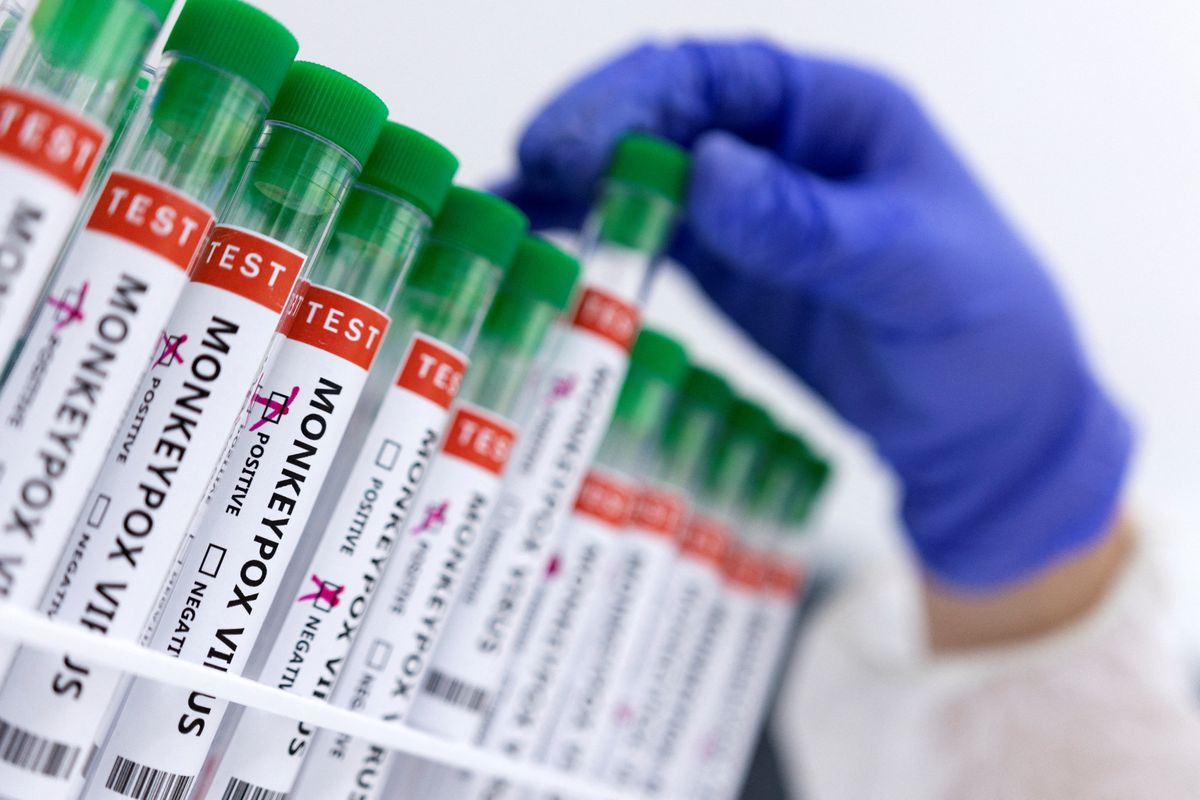Life & Health

Detection of the first confirmed case of monkeypox in India should sound the alarm bell in neighbouring countries, including Nepal, according to health experts.
A 35-year-old man who returned from the United Arab Emirates (UAE) became India’s first monkeypox patient after test results were flashed on July 14. Eleven persons who came in touch with the Kerala man have been identified as contacts and are under observation, say reports in the Indian media.
The infected person is believed to have come in contact with another confirmed case in the UAE.
Another reson Nepal should stay cautious is this: The UAE, with over 200,000 Nepalis, is one of the most popular destinations for Nepali migrants. The origin of Indian monkeypox case being UAE, Nepalis in UAE too could be vulnerable and possible carriers of the virus, according to health experts.
According the World Health Organization, as of July 12 there are now 9,200 cases of monkeypox and three deaths in 63 countries. Several cases have been detected in UAE too.
Like various other countries, Nepal too is at risk of Monkeypox as the virus causing the disease continues to spread around the world. Initially common only in remote parts of Africa, Monkeypox cases have now been detected in Europe, North America, Australia and even India.
Growing risk
Detection of monkeypox case in 63 other countries has posed a serious challenge to countries like Nepal to remain safe.
As thousands of Nepalis working and living abroad keep travelling back and forth, experts fear that they could be the carriers of the virus, underlining the need for better surveillance and monitoring at the border points.
Monkeypox causes a rare but non-life-threatening viral infection in most patients, experts say. They are showing increasing concern that the recent spread of the disease, over 9,000 cases worldwide, should be a wake-up call for Nepal.
“No case of monkeypox has been identified in the country yet but the chances of the infection entering Nepal via airports and land crossings are real,” Dr Sher Bahadur Pun, Chief of the Clinical Research Unit at Sukraraj Tropical and Infectious Disease Hospital, Teku, told NepalMinute.
A case of monkeypox was suspected in Nepal in a 26-year old male who had come to the country from Dubai on June 16. The man was kept under observation at Sukraraj Tropical and Infectious Disease Hospital.
He was taken to the hospital from Tribhuvan International Airport as he had symptoms similar to monkeypox during a screening at health desk in TIA. Specimen was collected from six body parts that underwent slit smear test. The person was tested of leprosy. The samples of the person were tested in National Public Health Laboratory, Teku.
Why Nepal is at risk
Health authorities have detected dozens of suspected or confirmed cases in America and Europe since May. “Monkeypox entering to India should be a wake-up call for Nepal as well. Open borders and easy access to mobility will affect the Nepali population,” Dr Pun further added.
The name monkeypox originates from the initial discovery of the virus in monkeys in a Danish laboratory in 1958. The first human case was identified in a child in the Democratic Republic of Congo in 1970. Since then the infection has been reported in humans in other central and western African countries.
The disease can spread from animals to humans and among people. It spreads through contact of respiratory droplets, bodily fluids and contaminated objects and surfaces.
“There are multiple modes of transmission. The infection can spread even from using the same towel or utensil used by an infected person. This could infect a number of people,” said Dr Pun.
According to World Health Organization, since May 13, 2022, cases of monkeypox have been reported to WHO from its 12 Member States -- Australia, Belgium, Canada, France, Germany, Italy, Netherlands, Portugal, Spain, Sweden, the United Kingdom and the United States of America, the countries that are not endemic for monkeypox virus.
Anyone could be infected by the virus. “There are probabilities of transmission in children as well, as children sleep together with their parents,” said Dr Pun.
The WHO has said that based on currently available information, cases have mainly but not exclusively been identified amongst men who have sex with men (MSM), who were seeking care in primary and sexual health clinics.
“Cases have been identified amongst men who have sex with men which is also a challenge for us as use of condom alone will not prevent the spread of the disease. Blisters will burst when pressed transmitting the virus to the other partner,” Dr Pun added.
Symptoms
Symptoms of infection are fever, headache, appearance of water blisters, rashes, body aches and swelling in the lymph nodes. The symptoms last from two to four weeks.
“If anyone travelling to Nepal from the infected areas has such symptoms then he or she should seek medical advice immediately. If they test positive then they must be isolated,” said Dr Pun.
“Animals can carry the virus. There are probabilities of transmission from animals. Therefore we need to work on other prevention modalities. Monitoring, surveillance, timely identification and treatment of the cases are necessary. We need to look at both the animal and human health in totality,” said Dr Sujan Babu Marahatta, Epidemiologist and Public Health Expert.
According to WHO around 3-6 per cent reported cases have led to death in endemic countries in recent times. The infection might bring severity for those with low immunity and underlying health conditions.
Advice
Doctors have advised that anyone entering the country from the infected areas should stay away from others at least for about 21 days. However, the government has yet to come up with guidelines on mobility in view of the monkeypox virus.
“We are discussing with the technical team of the WHO on the matter. If the mode of transmission is established from human to human or from handling of the animal and animal products, then it will pose a serious threat. Information about the virus and its mode of transmission is developing,” said Dr Samir Kumar Adhikari, Assistant Spokesperson at the Ministry of Health and Population.
“However, there is hospital preparedness in Nepal. We have added hospital beds, ICUs, human resources, along with hospital equipment in the last two years. It won’t be very difficult to handle the cases now as we have preparations both in the country borders and health care facilities.”
Broader country interdisciplinary approaches, surveillance and monitoring are necessary to help prevent spread of the virus, said Dr Marahatta. “Surveillance at the border is an immediate need for checking the risk.”
World Health Organization has said that anyone who has close contact with the infected person is at risk of catching the disease. Health practitioners have advised people to wear masks, wash hands frequently, clean objects and surfaces and avoid face-to-face or skin-to-skin contact to stay safe.
Dr Harold Varmus WHO Science Council chair addressing a press briefing on July 12 from Geneva said: “We must work to stop onward transmission and advise governments to implement contact tracing to help track and stem the virus as well as to assist people in isolation.”
The rare condition, that is, monkeypox has been confirmed in the United States and Europe, with more suspected cases worldwide, according to a health news site, Healthline, that has quoted doctors from the Centre for Disease Control, US. “Health experts are starting to investigate the spread and what this means for the public.”
“This is a virus that belongs to the same group as the smallpox virus; however, it’s a much milder and less deadly form of it,” says Dr. William Schaffner, an infectious disease expert at Vanderbilt University Medical Center in Tennessee.
The first confirmed case was on May 7th from a person who had traveled to the United Kingdom from Nigeria.
"Monkeypox requires collective attention and coordinated action to stop its further spread," quotes Dr Poonam Khetrapal Singh, Regional Director, WHO South-East Asia in and as saying in a news release issued by the WHO on July 15.
Facts About Monkeypox
- Initial symptoms of monkeypox include fever, body aches, and fatigue.
- The disease is similar to the smallpox virus but much less deadly.
- The disease can result in a rash that leads to red bumps on the skin.
- Transmission can also occur from contaminated materials such as linens, bedding, electronics, clothing, that have infectious skin particles.

_11zon1681280198.jpg)




